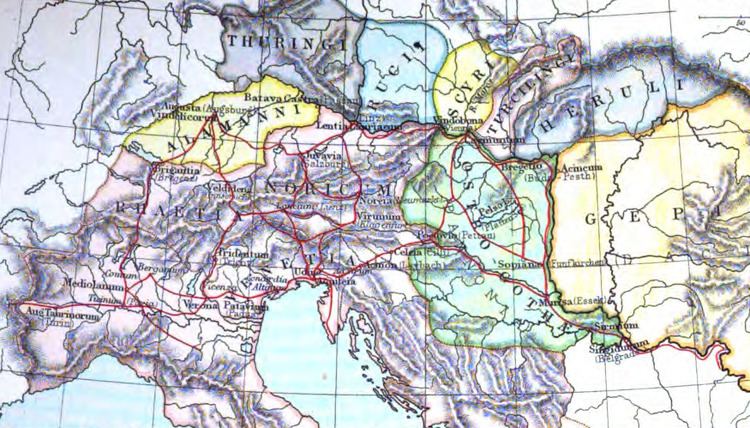 | ||
The Turcilingi (also spelled Torcilingi or Thorcilingi) were an obscure barbarian people who first appear in historial sources as living in Gaul in the mid-fifth century and last appeared in Italy during the reign of Romulus Augustulus (475–76). Their only known leader was Odoacer (Odovacar).
Contents
Identification
From the sources it is not possible to infer the origin of Turcilingi. The Turcilingi are generally considered to have been a Germanic tribe. It was often assumed that they were an Eastern Germanic people related to the Scirii, or at least connected to the Scirii by special affinity. Nineteenth-century German scholarship supposed that the Turcilingi were neighbours of (or the same people as) the Scirii in the first century, or that they were the royal clan of the Scirii or the Huns. Herwig Wolfram classifies the Turcilingi as a Germanic tribe, and supports the notion that they were the royal clan of the Scirii. The more enthusiastic invented a homeland for them straddling the Oder, with the Scirii to the east, the Vandals to the west, and the Rugii to the north. These scholars placed them in the Gothic mouvance. They were identified with the Thuringii by Helmut Castritius and Walter Pohl. Odoacer's father is said to have been a Thuringian in some sources. If this is true, it is possible that he ruled those people, and that Turcilingi is merely a scribal error for Thuringii.
Etymology
The problem of identification is related to the problem of etymology. Both are related to the question whether the Turcilingi were Germanic or not. The root Turci- has led some scholars to suggest that they were a Turkic-speaking tribe. The -ling suffix is Germanic, denoting members of a line, usually one descended from a common ancestor.
